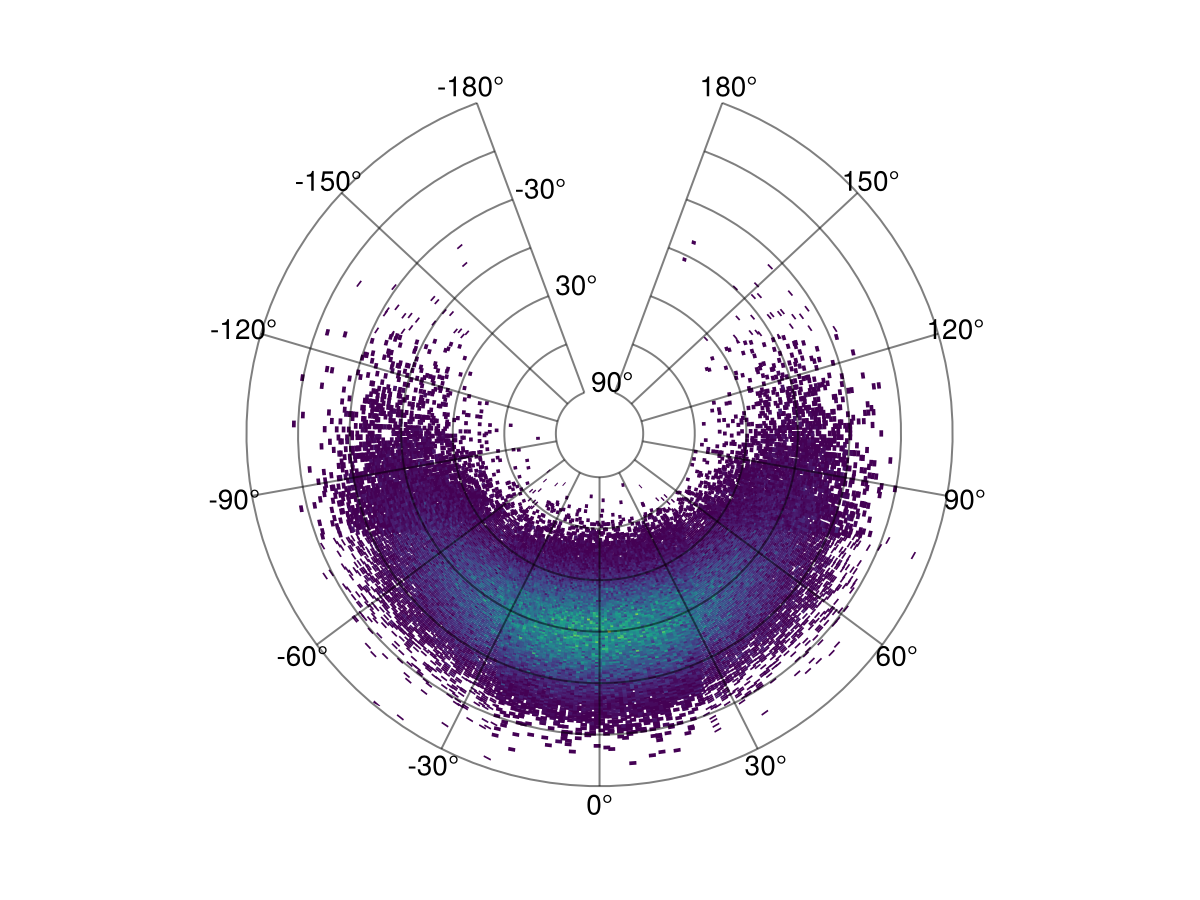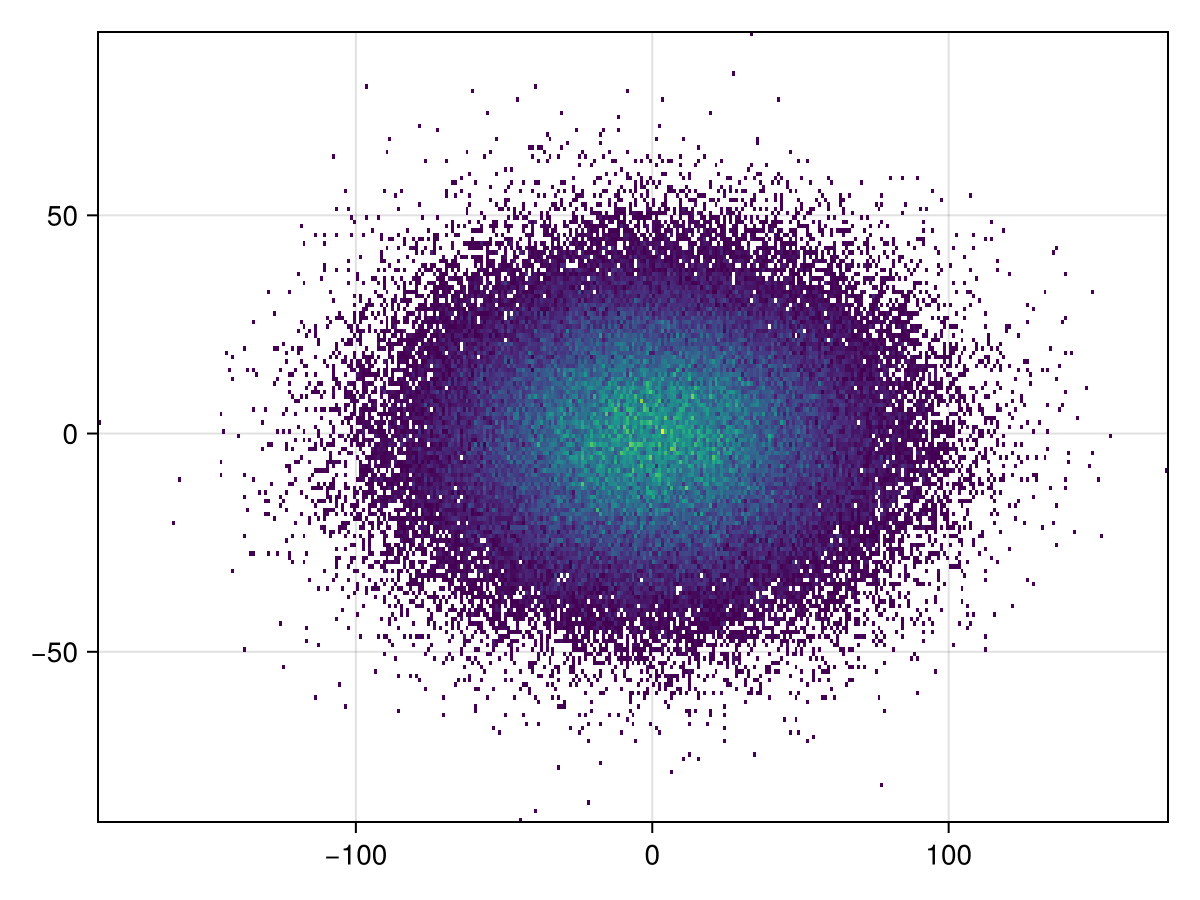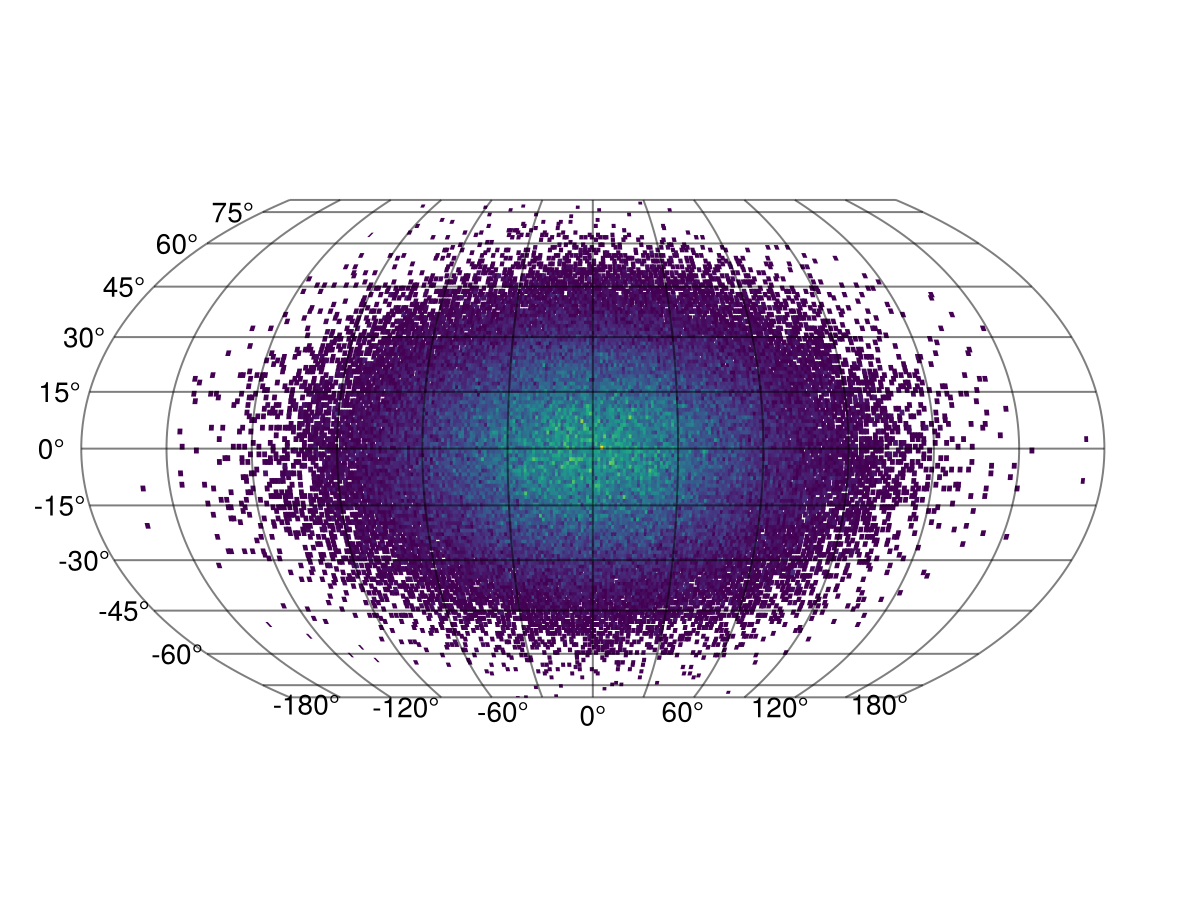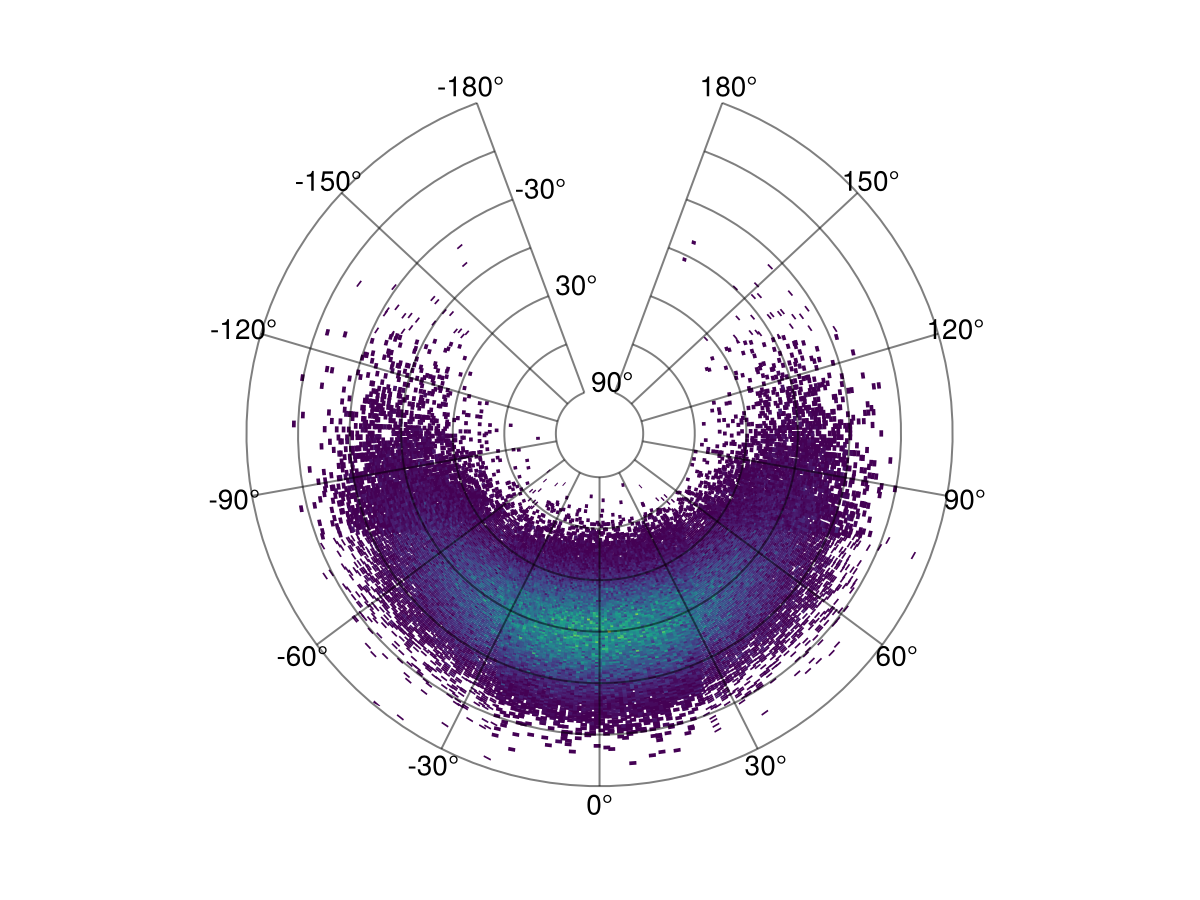Histogram

You can use any Makie compatible recipe in GeoMakie, and this includes histograms! Until we get the datashader recipe working, you can also consider this a replacement for that if you use it with the correct nbins.
We use the excellent FHist.jl to create the histogram.
julia
using CairoMakie, GeoMakie
using FHist
import CairoMakie: Point2dFirst, we generate random points in a normal distribution:
julia
random_data = randn(Point2d, 100_000)100000-element Vector{GeometryBasics.Point{2, Float64}}:
[-1.7337637961618357, -0.47452167542324303]
[1.4532771738043138, -0.6324680476859472]
[-0.4817002804091031, -0.3724485335613098]
[0.1682928011687825, 0.24889814372319916]
[0.0658431760448007, -1.8865111591873744]
[-1.5330248091153387, 0.3317588760378498]
[0.5667003736572725, 0.7923524952104092]
[0.6128647716581239, 0.1576743017288308]
[0.23269286685896887, -0.9131038790059479]
[-0.11476351849141027, -0.11880269424380976]
⋮
[0.49733941529526055, 1.0332427327271505]
[-0.6071502942676916, 1.1746456607810727]
[-2.3108457162095717, -0.961740526847832]
[-0.02915309682318518, 0.6779039369431118]
[0.6545560901430979, 0.9363853243128094]
[-0.09806119173232478, -0.42603982506272847]
[-1.0070954284508622, 0.16493162880749082]
[1.5813897473835272, -0.3762185913148442]
[-0.8234520311747406, -1.4979478699757274]then, we rescale them to be within the lat/long bounds of the Earth:
julia
xmin, xmax = extrema(first, random_data)
ymin, ymax = extrema(last, random_data)
latlong_data = random_data .* (Point2d(1/(xmax - xmin), 1/(ymax - ymin)) * Point2d(360, 180),)100000-element Vector{GeometryBasics.Point{2, Float64}}:
[-66.76446102923026, -9.245182920872068]
[55.963371394606696, -12.322477760890518]
[-18.54950465013683, -7.256475309191337]
[6.4806856562624695, 4.849322984738348]
[2.535515028526704, -36.75520350761069]
[-59.03432483225664, 6.463712098835363]
[21.822721812538934, 15.43753243620708]
[23.600438683827218, 3.071994045590469]
[8.960628821283416, -17.790151271042085]
[-4.41935889701892, -2.3146521996003577]
⋮
[19.151742633159213, 20.13083608289126]
[-23.38038333148883, 22.885812310772522]
[-88.98695953046442, -18.737746985305698]
[-1.1226389667622523, 13.207712575465221]
[25.205904442432466, 18.243747453623694]
[-3.776179101436003, -8.300603151095446]
[-38.78162852077878, 3.2133897285146795]
[60.89678097728401, -7.329927957107977]
[-31.709816046749825, -29.18476179513621]finally, we can create the histogram.
julia
h = Hist2D((first.(latlong_data), last.(latlong_data)); nbins = (360, 180))- edges: ([-187.0, -186.0, -185.0, -184.0, -183.0, -182.0, -181.0, -180.0, -179.0, -178.0 … 165.0, 166.0, 167.0, 168.0, 169.0, 170.0, 171.0, 172.0, 173.0, 174.0], [-89.0, -88.0, -87.0, -86.0, -85.0, -84.0, -83.0, -82.0, -81.0, -80.0 … 83.0, 84.0, 85.0, 86.0, 87.0, 88.0, 89.0, 90.0, 91.0, 92.0])
- bin counts: [0.0 0.0 … 0.0 0.0; 0.0 0.0 … 0.0 0.0; … ; 0.0 0.0 … 0.0 0.0; 0.0 0.0 … 0.0 0.0]
- maximum count: 41.0
- total count: 100000.0
This is what the histogram looks like without any projection,
julia
plot(h)
It's simple to plot to GeoAxis:
julia
plot(h; axis = (; type = GeoAxis))
The projection can also be arbitrary!
julia
plot(h; axis = (; type = GeoAxis, dest = "+proj=tissot +lat_1=60 +lat_2=65"))
This page was generated using Literate.jl.